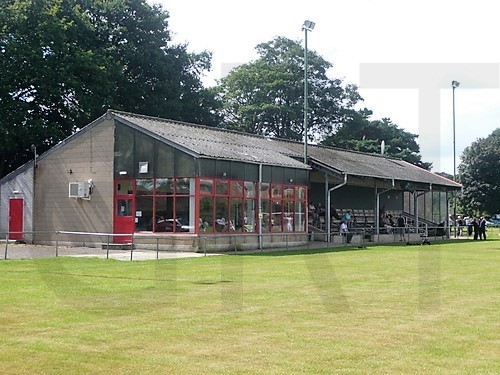Bournemouth Football Club, Victoria Park, Namu Road, Winton, Bournemouth, Dorset.
POSTCODE———————————-BH9 2RA
LOCATED————————————About two and a half miles north of Bournemouth town centre, and East of the A347 Express Way.
ORIGINAL SITE—————————–Possibly grazing land.
DATE CONSTRUCTED——————–1923
DATE VENUE OPENED——————-1923 for Amateur football.
Meaning other sports may have taken place prior to the arrival of Greyhound Racing.
FIRST MEETING—————————–June 23rd 1928. Had a checkered early history. New company run the track between 01 August 1932 and 29 September 1934. Re-opened yet again and operating during the 1930s.
Greyhound Racing only.
LICENSED OR INDEPENDENT———-Independent before switching to NGRC during 1932.
All venues covered would have to be licensed with the government, licensed suggested in this section would refer to tracks operating under NGRC Rules.
INSIDE OR OUTSIDE HARE TYPE——Don’t know
Please note that the Electric Hare suggested is only a guidance and would have been in operation for a certain amount of time at this venue. Although it is not necessarily guaranteed that it was operational all the time, as other types of lure may have been used and updated as time progressed.
DISTANCES———————————–525 yards.
Please note that most racing venues distances had become varied throughout the years, the ones given above were at once point set and offers only a guidance to the track size.
CIRCUMFERENCE—————————Don’t know
Please note that alterations at most racing venues throughout its existence would see that the circumference of the track would vary, the one shown above offers only a guidance to the track size.
BIG RACE NAMES—————————Nothing known of.
STADIUM SHARED WITH——————Bournemouth Football Club, this club is not the one presently in the Premier League.
LAST MEETING——————————-June 29th 1940.
Greyhound Racing only.
STADIUM CLOSURE DATE—————-Still there.
Meaning other sports may have taken place after Greyhound Racing had ceased.
STADIUM DEMOLITION——————-N/A
BUILT ON SITE——————————-N/A
In some cases, structure’s that originally covered the venue after the stadium had been demolished, may have been themselves demolished too, so the one described is more likely to be the one which now presently covers the site.
EVIDENCE LEFT TODAY——————-Possibly, sections of the grandstand will could date back to the Greyhound Racing era.
FURTHER COMMENTS——————–Greyhound Racing Company arrived at Victoria Park having previously based at Ensbury Racecourse.

Image provided courtesy of Mr A Nash.



After Greyhound Racing had failed miserably after its brief encounter at Bournemouth’s nearby Ensbury Park, a bit more lowered key attempt to promote the sport had been taking place at another venue a few miles away in the district of Winton. The track had been laid around an already developed football ground, known as Victoria Park, the home of Bournemouth football club, a team who had been playing amateur football there since its construction in 1923. Just to note, the football club mentioned must not be confused with today’s Premier League club, AFC Bournemouth, who play at Dean Court, a much larger venue located nearer the town centre.
Victoria Park’s first meeting came on the 23rd of June 1928, when a good crowd witnessed a greyhound called Cabaret win the first of six races over the 525 yard trip. Yet unlike Endsbury Park, greyhound racing at Victoria Park had become more welcome, proven by the increasing numbers of patrons entering through the turnstiles during its early months of operation. In 1932, a new greyhound company purchased the business, known as the Southern Greyhound Racing Promotions Limited, who had links with the nearby Southampton greyhound track. After a short closure, during which £5.000 had been spent on improvements and a new mechanical hare and a new tote system, the track reopened. Another ruling issued by the new greyhound company stated that no bookmakers were allowed to attend once the stadium had re-opened, and that all bets were only allowed to take place on the tracks new tote system.
Victoria Park ran its first meeting under NGRC rules on the 1st of August 1932, with a greyhound called Mount Fergus winning the first race over 400 yards. But less than two years later, the promising venture began to collapse as new legislation set by the Government reduced the amount of meetings per year to just 104, and also increased its already heavy taxation on on-course tote betting, which contributed to a slump in profits. The change had proved costly to the Greyhound Company, and within month’s it was announced that the company had gone in to administration, seeing Victoria Park run its final meeting on the 29th of September 1934.
But the closure had been temporary only and it is known that greyhound racing would continue to be staged right up in to June 29th 1940. In 1944 the council bought the ground for £4,500 and instantly leased it back to the football club, a club who have continued to play there every season since then.
Today, the venue is situated about two and a half miles north of Bournemouth’s town centre, and has took on a total transformation from the days of greyhound racing after improvements have extinguished all evidence of the sport. Its floodlights along side the A346 expressway remains as a landmark to were the football ground now operates, and yet remains to be seen whether any evidence of greyhound racing exists on the site today.

Recent Comments